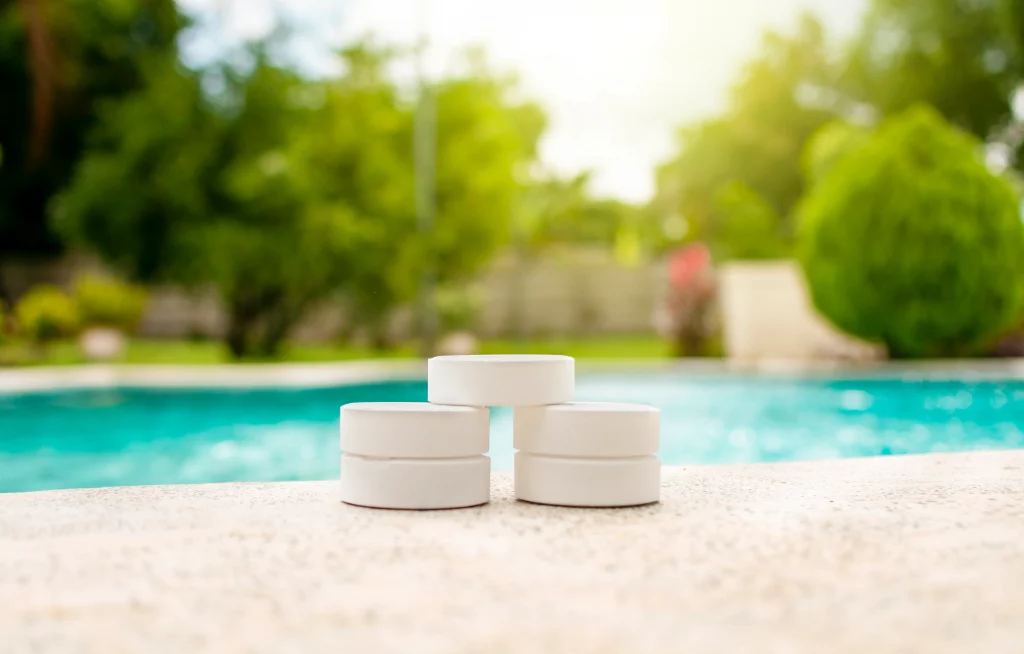5 Harmful Effects of Chlorine on Skin
Harmful Effects of Chlorine on Skin
Chlorine is a chemical element with the symbol Cl and the atomic number 17. It is a halogen found in the periodic table in group 17. The second-lightest halogens appear between fluorine and bromine in the table, and their properties are mostly intermediate. Chlorine is a yellow-green gas at room temperature that evaporates readily to form a similarly colored liquid and dissolves in water to give an acidic solution.
Chlorine was first prepared and characterized in 1774 by Swedish chemist Carl Wilhelm Scheele, who used brine (salt water) and green vitriol (iron(II) sulfate). It was not until 1810 that English chemist Sir Humphry Davy realized that chlorine was an element. He called it "dephlogisticated muriatic acid air" since it is a gas (then known as "air") and he believed that all acids contained phlogiston.
Uses and Exposure to Chlorine
Chlorine is produced on an industrial scale by electrolysis of sodium chloride brine. The most extensive application for chlorinated compounds is a disinfectant, with bleach (sodium hypochlorite) being the most common. These applications exploit the oxidizing properties of chlorine, which overcome the effects of water hardness. Chlorine and chloramine are effective against bacteria, mold, algae, protozoa, and viruses; however, they are ineffective against much organic matter and some pathogenic bacteria such as Pseudomonas aeruginosa.
Chlorine was first prepared and characterized in 1774 by Swedish chemist Carl Wilhelm Scheele, who used brine (salt water) and green vitriol (iron(III) sulfate). Scheele called the resulting substance "dephlogisticated muriatic acid air" (now known as "chlorine"") and he believed that all acids contained phlogiston.
Chlorine is a chemical element with the symbol Cl and the atomic number 17. The second-lightest of the halogens appears between fluorine and bromine in the periodic table, and their properties are mostly intermediate. Chlorine is a yellow-green gas at room temperature. It is a highly reactive element and a potent oxidizing agent. Among the elements, it has the highest electron affinity and the third-highest electronegativity on the Pauling scale, behind only oxygen and fluorine.
The word halide can refer to any binary compound of chlorine, including chlorides, fluorides, bromides, and iodides. All chlorine compounds contain chlorine atoms covalently bonded to other atoms. Still, chlorides have an ionic structure (atoms held together by electrostatic attraction), while most other chlorine compounds are covalently bonded.
Most chloride compounds are ionic halides, where one or more chlorine atoms have lost an electron to form a cation (positively-charged ion). These include sodium chloride (table salt), magnesium chloride, potassium chloride, and calcium chloride. There are also several covalent chlorides, such as carbon tetrachloride and thionyl chloride.
Chlorine forms compounds with almost every element, except for the noble gases (helium, neon, argon, krypton, xenon, and radon), which are unaffected by it. Most of these are ionic, although there are several covalent chlorides, such as carbon tetrachloride and thionyl chloride.
Today, chlorine is produced on an industrial scale by electrolysis of sodium chloride brine.
The most extensive application for chlorinated compounds is a disinfectant, with bleach (sodium hypochlorite) being the most common. These applications exploit the oxidizing properties of chlorine, which overcome the effects of water hardness. Chlorine and chloramine are effective against bacteria, mold, algae, protozoa, and viruses; however, they are ineffective against much organic matter and some pathogenic bacteria such as Pseudomonas aeruginosa.
Chlorine is used in swimming pools to keep them clean and bacteria-free. It is also used in hot tubs and spas for the same purpose. Chlorine is used in the chemical industry in many processes, such as manufacturing PVC, chlorofluorocarbons, and other chemicals.

Chlorinated water is used in cooling towers because it does not leave mineral deposits on the fill material or piping, which helps prevent corrosion and clogging. Chlorine is added to municipal water supplies to disinfect them and make them safe to drink.
Exposure to chlorine can cause health effects ranging from coughing and wheezing to more severe consequences such as chest pain, shortness of breath, and watery eyes. Some of these effects are due to irritation of the eyes, nose, and throat, while an allergic reaction may cause others. Long-term exposure to low chlorine levels in the air can also lead to a fluid buildup in the lungs (pulmonary edema). Workers exposed to high chlorine levels may experience more severe health effects, such as difficulty breathing, chest pain, burning sensations in the nose and throat, and watery eyes. Exposure to very high levels of chlorine can result in death.
Chlorine is a gas at room temperature and pressure. It has a distinctive odor that is detectable at low concentrations. Chlorine is a potent oxidizing agent and reacts with many substances.
When chlorine gets released into the air, it reacts quickly with water vapor to form hydrogen chloride (HCl) gas. This gas is highly corrosive and irritating to the respiratory tract.
Chlorine reacts with metals to form metal chlorides, which are corrosive and can cause burns.
Chlorine reacts with organic material to form various compounds, some of which may be toxic. These compounds can pose a health hazard if inhaled, ingested, or come into contact with the skin or eyes.
Effects of Chlorine on Skin
Chlorine is used in swimming pools to kill bacteria and other microorganisms that can cause infections or diseases. However, the effects of chlorine on skin may be harmful.
Chlorine can strip the natural oils from the skin, leaving it dry, cracked, and irritated. In addition to dry chlorine skin, it can also damage hair, causing it to become brittle and more likely to break.
If you swim regularly in a chlorinated pool, you may risk developing a condition known as "chlorine poisoning." Chlorine poisoning is a condition that occurs when someone is exposed to high levels of chlorine.
The symptoms of chlorine poisoning include coughing, wheezing, shortness of breath, watery eyes, and chest pain. This chemical may also cause a chlorine skin burn.
A chlorine skin burn is a chemical burn that occurs when the skin comes into contact with chlorine. Chlorine reacts with the oils and sweat on the skin to form chloroform, a poisonous gas. This gas can cause damage to the lungs, eyes, and skin.
A chlorine skin burn is usually not severe and will heal within a few days. However, if the burn is severe, it may require medical treatment.
If you have a chlorine skin burn, rinse the affected area with clean, cool water for at least 15 minutes. You can also apply a cool compress to the site to help relieve pain and swelling. If you have any blisters or open wounds, do not pop them.
In severe cases, exposure to high chlorine levels can lead to death.
If you think you may have become exposed to chlorine, it is essential to seek medical attention immediately.
Causes of Chlorine Poisoning
There are several ways that someone can become poisoned by chlorine.
Inhalation is the most common way people become exposed to chlorine gas, which can happen if chlorine gas gets released into the air, such as from a chemical plant or swimming pool.
Chlorine gas is also used in industrial processes, such as textile production. Workers exposed to chlorine gas may suffer shortness of breath, chest pain, and watery eyes. In severe cases, exposure to high chlorine levels can lead to death.
Skin contact with chlorinated water can also cause poisoning, which can occur if you swim in a chlorinated pool or work in an occupation involving exposure to chlorinated water, such as a lifeguard.
How to Prevent Chlorine Poisoning
There are several steps you can take to prevent chlorine poisoning.
If you swim in a chlorinated pool, you should shower before and after swimming. This step will help to remove the chlorine from your skin and hair.
Also, be sure to wear proper swimming attire. Loose-fitting clothing that covers the skin can help to protect against the harmful effects of chlorine.
Other ways to prevent complications of chlorine on the skin are:
- Apply a layer of sunscreen to exposed skin before swimming.
- Wear goggles or a swim cap to protect your eyes from chlorine.
- After swimming, rinse off in fresh water and apply a moisturizer to your skin.
Finally, be sure to stay hydrated. Drinking plenty of water will help to flush the chlorine out of your system.
If you think you may have become exposed to chlorine, it is essential to seek medical attention immediately. Chlorine exposure can be hazardous and even fatal if not treated promptly.





